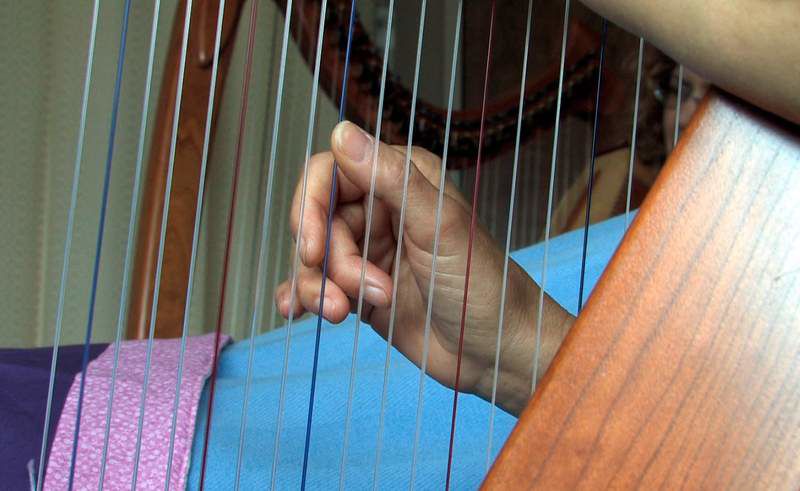At hospitals, specially trained harpists comfort the dying
Published 5:00 am Sunday, July 26, 2009

- Harpist Jane Franz plays for a cancer patient in a hospital room in Eugene. Franz, a music-thanatologist on the staff of Sacred Heart Hospital, uses music to bring comfort to the dying. “We come in with this music that does whatever it does for the patient and the family,” Franz says.
SPRINGFIELD — In a white-walled hospital room, pancreatic cancer slowly drained all the life that remained in Carolyn.
There was nothing more to do for this 62-year-old woman — no oxygen or other life support, just a morphine drip to keep her as comfortable as possible.
Trending
That, and the ministrations of Jane Franz.
Franz brought her harp to the foot of Carolyn’s bed and started to play, weaving a hypnotic and soothing melody. Occasionally, she paused to adjust to the rhythm of Carolyn’s heartbeat and breathing. After 20 minutes, the last notes settled like a benediction over the room.
Three family members sat at her bedside, sometimes holding hands. There were tears and hugs. Franz returned the next day to play one last time, and then Carolyn died.
This is what Franz does. As a music-thanatologist on the staff of Sacred Heart Hospital, she uses music to bring comfort to the dying.
“Doctors can write lots of medical prescriptions and not get the right response,” said Dr. Stewart Mones, medical director at Sacred Heart. “There are times when no medicines are as effective as music therapy.”
Music-thanatology — “thanatology” derives from “thantos,” the Greek word for death — has been around in various forms for centuries. Its roots extend at least back to the monastic medicine of Benedictine monks in 11th century Cluny, France.
Trending
As practiced today, it was developed over more than 30 years by Therese Schroeder-Sheker. Her Chalice of Repose program was located in Colorado and Montana before 2002, when it moved to Mt. Angel in the quiet farm country of the Willamette Valley south of Portland.
It stresses carefully individualized “prescriptive music,” a concept Schroeder-Sheker developed in which a harpist observes the body processes and mental state of a patient, and adjusts tone and tempo to match.
Music-thanatologists say they use the harp for the many sounds it can make and for its warm, low, resonant tones. And it’s portable.
Their “vigils,” as they are called, are held at no cost to the patient at a growing number of hospitals and hospices across the United States and elsewhere.
Chalice grew from Schroeder-Sheker’s work as an orderly in a geriatric home. She saw that people often died alone in a room with nothing more than canned laughter from TV sitcoms.
She began using music to care for the dying in 1973. She recalls the throes and death rattles of an often-abusive emphysema patient assigned to her in the home. She held his hand, called his name, made eye contact, found herself singing softly to him: “The Mass of the Angels,” “Adoro te Devote,” “Salve Regina.”
The thrashing stopped. The rattle quieted.
From that moment, a movement has grown.
“We come in with this music that does whatever it does for the patient and the family,” said Franz, who heads the program at the Peace-Hope campus of Sacred Heart and the new two-year music-thanatology program at Eugene’s Lane Community College, a first for a public institution. It will graduate its first class of nine in July.
Lane stresses an intensive monthly training class for two years; students commute from as far away as Utah.
Beyond classes, clinical internships are an essential part of the training and provide 300 hours of direct contact with patients. Students seek certification through the independent Music-Thanatology Association International; 38 have been certified to date.








